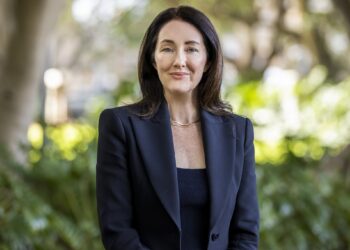Adopting a total portfolio approach has helped Australia’s sovereign wealth fund remain on the front foot in identifying major paradigm shifts in markets, including constructing portfolios for a high interest rate environment as early as 2019, according to the fund’s outgoing deputy chief investment officer.
Speaking at the Australian Wealth Management Summit in Sydney this week, Future Fund deputy CIO Alicia Gregory said that its approach to investment portfolios differs to that incorporated by most of its institutional investment peers.
“[It’s] actually probably a little bit more similar to endowments or family offices,” Gregory said.
For the past 15 years, the fund has employed an approach that entails convening the Future Fund’s team of experts spanning various asset classes alongside top-down strategists. This method focuses on discussing trends across the portfolio and markets, as opposed to employing a strategic asset allocation strategy where investors establish target allocations for different asset classes and periodically rebalance portfolios.
“Sometimes it can feel like it takes many conversations to get anything done, but [the approach] really is all about having great resources and the very best current opportunities based on where we think global risks are, and looking forward and forming a view on the very best portfolio to have today given the assessment of markets,” Gregory said.
In 2019, the possibility that interest rates could go higher, driven by major paradigm shifts observed around the world, was among the key risks identified through the fund’s total portfolio approach.
“We have these discussions in our investment committee and actually, the time spent in our committee is quite heavily on these types of discussions, rather than just the next investment opportunity that might be coming along, which is pretty unusual, I think, for the way an investment committee might operate within an asset owner,” she said.
After months of careful consideration, the fund said that initial actions, in a high-interest-rate environment, would necessitate trimming the duration in the portfolio, which included reducing exposure to low cash flow, long-dated private assets such as growth capital.
“We had quite a lot of money at that stage in a late-stage venture and that was there because we were, and remain, really strong believers in technology breakthroughs and the desire to have exposure to technology in your portfolio. But we went to market and went to sell over six billion dollars of our private equity portfolio, and the anchor of that was late-stage venture capital,” Gregory said.
She observed the intricacy of selling sizable volumes of capital, including some held in feeder funds, without requiring a substantial discount, which she deemed “quite significant”. Nonetheless, the fund’s cohesive approach instilled confidence in the anticipation of potentially higher rates in the next phase of the cycle.
The decision ultimately translated to some $2 billion in value added to the portfolio, Gregory said.
“We threw a lot of resources at this opportunity,” Gregory said.
“In December 2019, we sold the first tranche [of assets] and in June 2020, we sold the second tranche at what was one of the largest secondaries ever done globally. Roll forward 18 months, rates are rising, late-stage VC was falling, and our estimate is this probably added $2 billion to our portfolio.”
While acknowledging the difficulty of quantifying the opportunity cost of potential holdings, she found continued confidence in the fund’s holistic portfolio investment approach, which encourages contrarian moves.
She said: “I also don’t know that any organisation that was running an asset allocation approach might have wanted to do this. Sector teams probably wouldn’t have wanted to sell 25 per cent of their sector portfolio, especially if they weren’t over allocated to the asset class.”
An additional benefit of a total portfolio approach ensures the fund is not “too diversified” compared to its peers who adopt a strategic asset allocation approach, she said.
As at 31 March, the Future Fund’s total assets under management stand at a record $223.4 billion.
Over the quarter, the fund grew $11.5 billion and returned 5.4 per cent.
“When you have different sector teams and you’re thinking about Australian allocations, global equity allocations and you build those individually, and then aggregate them all together to create a portfolio, we believe you become too diversified,” Gregory said.
“We believe that this can be quite costly from a portfolio perspective. Especially if you start adding large amounts of private markets to your portfolios, you’ve probably become overly diversified.
“This has led [the fund] to the concept of managing one portfolio and that is really thinking about the portfolio at this top level and not within the assets solely within the asset class buckets.”




